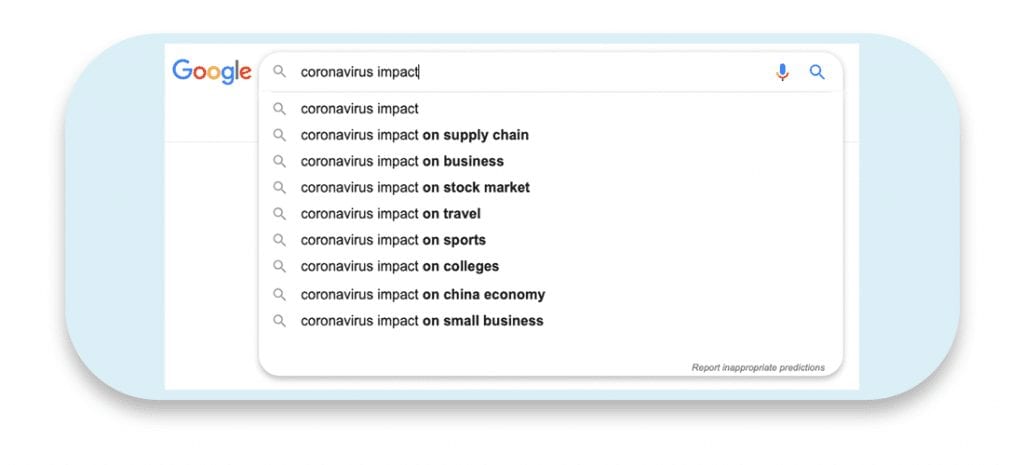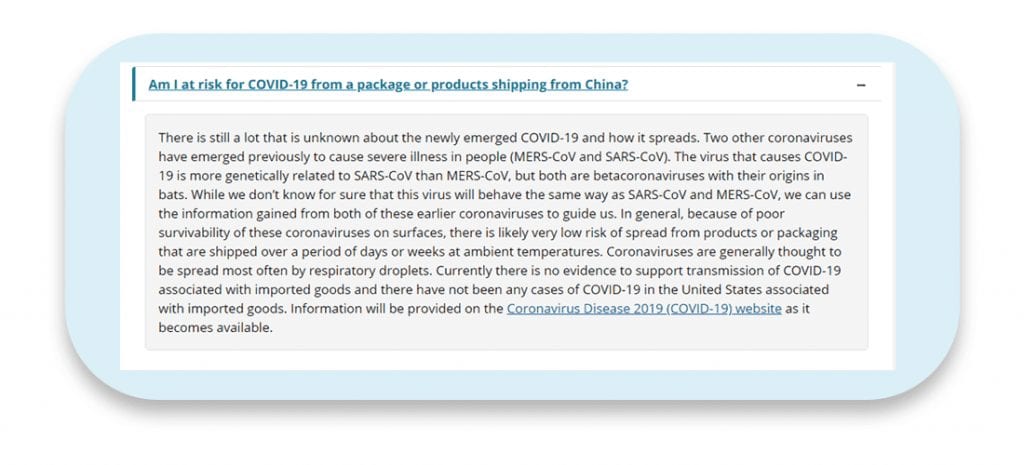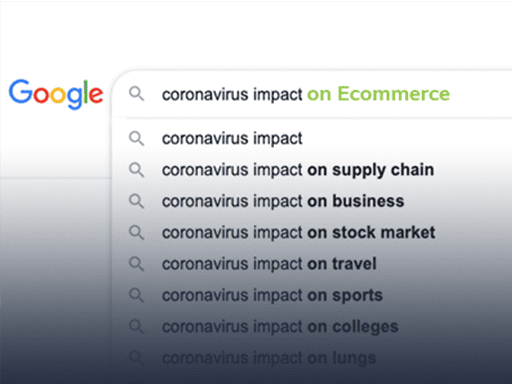Update August 24th, 2020: When we wrote this blog back in April, we were watching the impact of COVID-19 unfold and observing how it was impacting the ecommerce industry. Now five months later, some of the changes we discussed are still in play, while others have shifted.
As countries globally find effective solutions for keeping the virus at bay, supply chains have slowly started to recover. Shipping times may still be slower as extra precautions are taken. While some travel limitations have lifted (with 14 day quarantine periods in place), travel is still limited, and remote work has become a norm.
As for customer behavior, we continue to see changes in how people are shopping. Curbside pick-up is expanding, bulk food orders continue, and ecommerce has grown. According to Search Engine Land, the ecommerce industry grew 45% in Q2. It will be interesting to see how these behaviors extend into the holiday season.

Is COVID-19 (the coronavirus) effecting your ecommerce business? Companies have been surprised that the impact has been so widespread — even online.
Many were unprepared for issues like supply chain shortages, travel limitations, and changes in consumer behavior. It’s time to make sure you are ready for the continued effects of COVID-19 — and make your business more resilient when unexpected change arises.
Let’s take a look at the current impact of the virus, and solutions for your business.


Problem 1: Supply Chain
The coronavirus or COVID-19 has impacted manufacturing in China, South Korea, and several other countries that export goods to the United States. Many U.S. retailers rely heavily on these manufacturers, who are now unable to provide goods to customers.
Solution:
- If necessary, look for domestic suppliers
- Track costs on the SKU level
- Expand your catalog
Consider if it is necessary (and possible) for your business to switch to domestic suppliers until the supply chain is back to normal. Recent news says some workers in China are slowly returning to work, so decide if your business can hold out until then. Ultimately you should prep for the worst — look for domestic suppliers you could switch to if need be, and hope for the best — that the supply chain will return to normal soon.
Unfortunately if you do switch to domestic suppliers, competition for remaining suppliers is likely to be high, which can raise the cost of goods. If you’re already tracking costs on the SKU level and factoring those into your advertising (a profit-driven approach), remember to update costs and adjust your strategy accordingly.
Don’t limit yourself to your current product catalog, either. See how you can adapt your business to accommodate these new limitations. Adding a new product line (ideally, one that aligns closely to your existing product offering) can expand your catalog and help close the revenue gap created by stock status problems.
For example: a retailer selling Western-style hats could explore belt buckles or even boots. These products are complementary to their previous product line, and since they’ve found suppliers who are not affected by the virus, will have a much more stable stock status.

Problem 2: Travel and Cancellations
Problem: Travel limitations impact customers and businesses alike. If your employees frequently travel to meet with clients or visit other offices, you may have already restricted their travel. Other companies are doing the same. Major events have been cancelled and colleges are telling students to stay home to prevent the spread of the virus.
Solution:
- Utilize technology + remote work
- Don’t schedule large events
- Redirect spend to top-performing products
Now is a good time to adopt new technology. If you can, offer options for employees to work remotely. Being an ecommerce business probably gives you a little more wiggle room to do so — since many parts of your business are digital. Hand-in-hand with this, avoid scheduling large events — instead opt for digital meetings. Be aware of the fact that your customers may also be unable to travel which can impact their purchasing behaviors.
Some retailers may be more affected by travel restrictions than others. Those who sell luggage or other vacation and travel gear should prepare for a downturn in sales and revenue. That said – don’t stop advertising entirely. As long as the cost per click is low enough to retain profitability, you should continue to run ads.
Some sales will occur despite the restrictions, and you’ll want to be competitive for those. Where possible, consider shifting a good portion of your budgets to items that are still selling well. A profit-driven strategy should effectively highlight these products for you, and redirect spend toward them!

Problem 3: Customer Behavior
As people are preparing for possible quarantines, the consumer environment is changing. While shoppers are scrambling for toilet paper, ramen and bottled water, they may be keeping their wallets closed and limiting other purchases.
Solution:
- Pull back advertising for out of stock items
- Watch for restricted keywords and phrases
- Prevent the spread of misinformation
As the economy is uncertain following the stock market crash, consumers may continue to be conservative with their purchases. On the flipside, as people are encouraged to stay away from groups, and events are suspended, rainy day money may accumulate — which could lead to more online purchases.
Certain goods are in short supply regardless of supply chain issues, like masks, hand sanitizer, and paper goods (including paper towels and toilet paper.) Other goods – like our luggage example above – may be overstocked.
Pull back on advertising items if your suppliers cannot provide them in the short term. Track any transactions you are forced to refund due to stock status, to ensure your revenue and profit numbers are accurate. Watch for restrictions on keywords or phrases as events develop. Right now, Google has banned advertising on the term “face mask,” so retailers selling tools or safety gear will likely see traffic drop to those items.

Finally, customers may be taking misguided precautions such as avoiding online purchases for fear of being exposed to the virus via boxes or packaging. Help prevent the spread of misinformation. Know that COVID-19 is highly unlikely to be transmitted as a result of packaging or shipping, as this type of virus typically does not survive long on surfaces.

Responding to COVID-19 in Ecommerce
Perhaps the best way to insulate your account from COVID-19 (and a number of other adverse events) is to adopt a margin-based advertising strategy.
This strategy will:
- Increase cash flow
- Allow you to lower spend without halting advertising
- Give you a larger breadth of room for error
Often, we work with clients who prefer a profit-dollar approach — that is, an approach that maximizes profit in terms of whole dollars as opposed to margin percentages.
A great example of this is a retailer who chooses to stock products that raise the average cost of goods, but that sell at a much higher price point. Despite a reduction in available margin percentage, the retailer could see an increase in profit dollars due to the higher average order value.
The flip side is a margin-based approach, which maximizes available margin. Usually, this involves lowering ad spend without halting advertising entirely. Because less money is reinvested into the program, cash flow frees up more and more revenue is preserved as profit. This cash flow will be crucial for weathering this type of adverse event, and for re-expanding your advertising once things have returned to normal.








